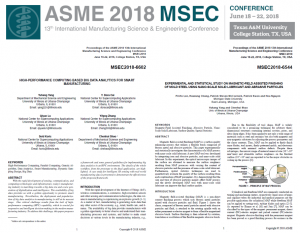With the rapid development of sensing, communication, and computing technologies and infrastructure, today’s manufacturing industry is marching towards a big data era and a new generation of digitalization and intelligence. The availability of big data provides us with a golden opportunity to promote smart manufacturing. Nevertheless, the deployment and popularization of big data analytics in manufacturing are still at its nascent stage. One critical challenge results from the lack of high performance computing (HPC) capability, which is crucial for responsive and intelligent decision-making in the modern manufacturing industry. To address this challenge, this paper proposes a framework and some general guidelines for implementing big data analytics in an HPC environment. The details of the whole workflow, from the prototype to the final application, are highlighted. A case study for intelligent 3D sensing with real-world manufacturing data is presented to demonstrate the effectiveness of the proposed framework.
Magnetic field-assisted finishing (MAF) is a surface quality enhancing process that utilizes a flexible brush composed of ferrous metal and abrasive particles. This paper experimentally and statistically investigates the characteristics of a MAF process with nano-scale solid lubricant. A new MAF tool was developed by integrating iron and abrasive particles, and nano-scale solid lubricant. In this experiment, the optical microscopic images of the surface are obtained to measure the surface roughness resulting from MAF processes with varying the content of abrasive particles and the presence of the nano-scale solid lubricant. Furthermore, spatial statistics techniques are used to quantitatively evaluate the quality of the surface resulting from each combination of MAF parameters. It is demonstrated that the size and type of abrasive particles mainly affect the MAF process and the newly developed MAF tool with nano-scale solid lubricant can improve the final surface quality.
